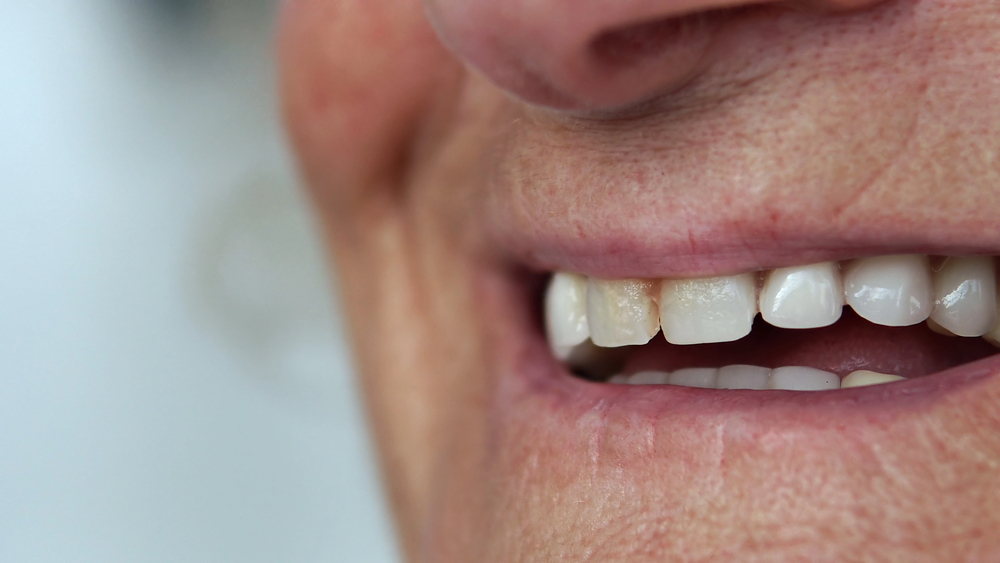For many women over 40, life becomes a paradox of flourishing confidence and invisible decline. Careers advance, personal style refines, emotional intelligence deepens—yet beneath the surface of seemingly healthy smiles, a quiet deterioration creeps in. Dentists have a name for it: secondary or hidden decay. Unlike dramatic toothaches or sudden breakages, this condition festers silently beneath old dental fillings, behind tight contact points, or along gum lines softened by hormonal shifts. It is a stealth epidemic rarely discussed, yet astonishingly prevalent.
Why Women Over 40 Are Uniquely Vulnerable
While dental decay is commonly associated with children and teenagers, emerging data suggests that women in midlife face a distinct form of risk. The culprit? Biological change. Perimenopause and menopause trigger shifts in salivary flow, bone density, and tissue resilience. Reduced estrogen levels thin the gum tissue, decreasing its ability to combat bacterial invasion. Saliva—often underestimated as the body’s natural mouthwash—declines in both volume and enzyme efficiency, making it harder to neutralize acids or remineralize enamel.
Combine this with decades-old dental fillings, many of which were done with materials that expand and contract over time, and microscopic gaps often form between the filling and the natural tooth. These gaps become the perfect hiding spot for bacteria. Cavities flourish in silence—no pain, no visible dark spot, no loose crown. By the time symptoms appear, the decay has often spread beneath the filling like mold behind wallpaper.
The Myth of the “Perfectly Fine” Tooth
A major obstacle to combating this epidemic is misplaced confidence. After years of routine dental appointments and past restorative treatments, many women assume that unless something hurts, everything is fine. But pain is a late-stage indicator in dentistry. Early decay rarely causes discomfort. In fact, teeth with deep internal damage often look pristine from the outside—a sparkling façade masking structural collapse.
That is why dentists insist that X-rays—particularly bitewing radiographs—are not optional add-ons but essential diagnostic tools. They reveal the shadowlands beneath enamel where decay hides. Unfortunately, many patients decline them, believing that visual inspection is sufficient. This reluctance allows early intervention windows to close.
The Psychological Burden of Delayed Care
Women over 40 juggle multiple roles—professional, caregiver, partner, friend. Their instinct is often to delay personal care in favor of others. Dental issues, especially silent ones, rarely feel urgent. But neglect comes at a high price. Once decay spreads beneath older dental fillings, repair becomes more complex and costly—root canals, crowns, extractions, implants.
What could have been a €200 filling becomes a €3,000 reconstruction.
Worse still, delayed treatment affects quality of life. Studies show that dental insecurity—fear of smiling, avoiding certain foods, embarrassment over appearance—correlates strongly with diminished self-esteem and social withdrawal. For women who have worked decades to step into their power, losing confidence over preventable oral health decline feels especially cruel.
Prevention 2.0: Beyond Brushing and Flossing
Most women think they know the rules of maintaining good oral hygiene for long-term success—brush twice a day, floss daily, minimize sugar. Yet after 40, these basics are no longer sufficient on their own. Prevention must evolve with physiology.
Here’s what modern oral longevity looks like:
- Upgrade Your Tools: Electric toothbrushes remove significantly more plaque than manual ones. Water flossers penetrate areas traditional floss misses, particularly beneath aging fillings and gum pockets.
- Neutralize Acid Attacks: Dry mouth from medication or hormonal changes can be countered with pH-balancing rinses or sugar-free xylitol mints.
- Strengthen, Don’t Just Clean: Products containing hydroxyapatite or prescription-strength fluoride actively rebuild weakened enamel.
- Ask for Micro-Layered Monitoring: Dentists now use laser cavity detection and high-definition scanners that can find lesions invisible to both X-rays and traditional instruments.
Women over 40 don’t just need maintenance—they need surveillance.
Reframing Dental Care as Self-Preservation
Too often, dentistry is framed as a reactive response rather than proactive defense. But what if we saw it like financial planning? Just as one invests early to prevent future insecurity, regular dental evaluations prevent catastrophic breakdowns. Replacing old dental fillings before they fail is not wasteful—it is strategic preservation.
This is not vanity. This is agency.
A strong, healthy smile is not just cosmetic—it affects digestion, speech, mental well-being, and even cardiovascular health. With mounting research linking gum disease to heart disease and cognitive decline, protecting the mouth becomes a whole-body commitment.
A Call to Action for Every Woman Over 40
If you could X-ray your optimism, would it match reality?
Make your next dental visit more than a cleaning. Ask for a full restoration audit. Request age-specific advice. Replace the silent assumption of health with the certainty of knowledge. Practice maintaining good oral hygiene for long-term success as an act of rebellion against decline.
The silent epidemic of hidden decay may be widespread—but it is not inevitable. The tools exist. The science is clear. What remains is choice.
And the most powerful decision a woman can make in midlife is to protect the parts of herself the world can’t yet see.

